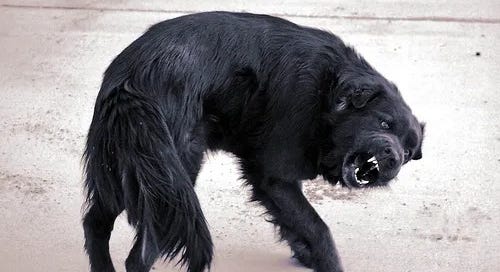What Is Agonistic Behaviour?
Agonistic behaviour in dogs includes the actions and reactions they show during conflicts or confrontations. These behaviours are a normal part of how dogs interact socially and help them communicate with each other. It's important for dog owners and trainers to understand these behaviours in order to handle and prevent aggressive situations effectively.
Types of Agonistic Behaviors
1. Dominance Displays
Dominance displays are frequently seen in agonistic behaviour and include actions like growling, standing tall, and making direct eye contact with the other dog. These behaviours are meant to establish a hierarchy and show control over resources.
2. Aggression
Aggression is a more intense form of agonistic behaviour and can include actions such as biting, snapping, or lunging at the other dog. Aggression is often triggered by fear, territoriality, or resource guarding.
3. Submission
Dogs show submissive behaviours to prevent conflict or aggression from others. These behaviours can include crouching, rolling over, or avoiding eye contact to indicate submission.
4. Territorial Behaviour
Territorial behaviour is a part of aggressive behaviour in dogs where they defend a certain area or space from perceived threats. Dogs may bark, growl, or charge at intruders to protect their territory.
Factors Influencing Agonistic Behaviour
Several factors can influence the display of agonistic behaviour in dogs, including:
Genetics: Some dog breeds are predisposed to certain aggressive tendencies.
Socialisation: Proper socialisation from a young age can help prevent undesirable behaviours.
Environment: Stressful or unfamiliar environments can trigger varied responses in dogs.
Health Issues: Underlying health issues or pain can lead to increased irritability and aggression in dogs.
Managing Agonistic Behaviour
Understanding and managing agonistic behaviour in dogs is essential for promoting balanced interactions. Some tips for managing agonistic behaviour include:
Training: Implementing obedience training and teaching appropriate behaviours can help prevent conflicts.
Socialisation: Exposing dogs to various social situations can reduce fear and aggression towards other dogs and people.
Consistency: Maintaining consistent rules and boundaries can help prevent dominance-related conflicts.
Seeking Professional Help: In severe cases of aggression, consulting a professional dog trainer/behaviourist is recommended.
Understanding and addressing the components of aggressive behaviour in dogs can help owners create a safe and peaceful environment for their dogs. Recognising the triggers and responses related to aggressive behaviour is essential for building positive relationships between dogs and ensuring their well-being.
Remember, your dog's behaviour reflects their overall health and happiness. Ignoring or misunderstanding their actions can lead to unnecessary stress and potential harm. Always seek professional help if you are unsure about any of your dog's behaviour.




